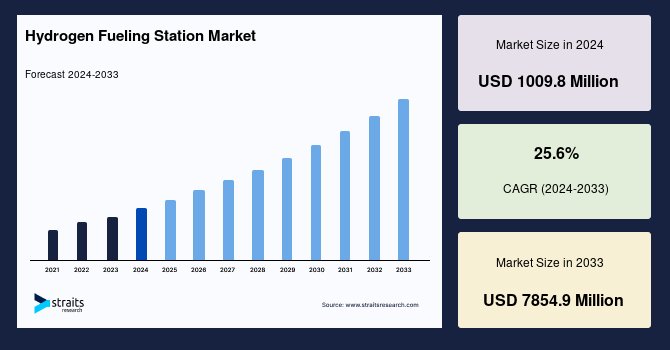The global e-commerce apparel market has experienced remarkable growth in recent years, driven by the convenience of online shopping, technological advancements, and shifting consumer preferences. In 2021, the market was valued at USD 551.06 billion and is projected to reach USD 1087.88 billion by 2030, growing at a compound annual growth rate (CAGR) of 7.85% from 2022 to 2030. This growth is fueled by factors such as increasing internet penetration, rising disposable incomes, and the growing influence of social media and celebrity culture on fashion trends. However, challenges like online transaction security concerns and the demand for sustainable and ethically sourced materials may hinder market expansion.
Get Free Sample Report : https://straitsresearch.com/report/e-commerce-apparel-market/request-sample
Market Scope and Research Methodology
The e-commerce apparel market encompasses a wide range of clothing and accessories sold through online platforms, including women’s, men’s, and children’s apparel. The market’s scope extends across various regions, with significant contributions from North America, Europe, Asia-Pacific, Latin America, and the Middle East & Africa. The research methodology for analyzing the e-commerce apparel market involves a combination of primary and secondary research. Primary research includes interviews with industry experts, retailers, and consumers, while secondary research involves analyzing market reports, industry publications, and consumer behavior data. This comprehensive approach ensures accurate market sizing, segmentation, and forecasting.
Market Dynamics
- Technological Advancements: Innovations in artificial intelligence (AI) and machine learning are transforming the online apparel market. Companies are leveraging AI to offer personalized shopping experiences, such as virtual fitting rooms and size prediction tools. For instance, platforms like Virtusize use AI algorithms to help customers find the perfect fit, reducing return rates and boosting sales.
- Rising Internet and Smartphone Penetration: The proliferation of smartphones and internet access has made online shopping more accessible and convenient. In 2019, there were 4.78 billion mobile phone users globally, with 3.5 billion using smartphones. This widespread connectivity has significantly contributed to the growth of the e-commerce apparel market, particularly in developing regions.
- Urbanization and Disposable Income: Increasing urbanization and rising disposable incomes, especially in emerging economies, are driving demand for online apparel. Consumers are increasingly turning to e-commerce platforms for their shopping needs, attracted by the convenience, variety, and competitive pricing offered by online retailers.
Segmentation
By Type
- Women’s Apparel: Dominating the market, women’s apparel accounts for over 70% of total revenue. The segment is driven by factors such as increasing fashion consciousness, rising disposable incomes, and the growing number of working women.
- Men’s Apparel: This segment is expected to grow at a CAGR of 7.56% from 2022 to 2030, fueled by rising demand in developing countries like China and India. The growing fashion awareness among millennials is a key driver of this segment.
- Children’s Apparel: The children’s apparel segment is also witnessing growth, driven by increasing innovation and affordability. The rising working population and growing demand for trendy and comfortable clothing for children are contributing to this segment’s expansion.
Get Free Sample Report for Detailed Market Insights : https://straitsresearch.com/report/e-commerce-apparel-market/request-sample
By Region
- Europe: Europe held the largest market share in 2021, accounting for over 35% of global revenue. The region’s dominance is attributed to the high demand for women’s apparel in countries like the UK, France, and Germany, as well as the influence of emerging fashion trends.
- Asia-Pacific: The Asia-Pacific region is expected to witness the fastest growth, with a CAGR of 8.86% from 2022 to 2030. This growth is driven by increasing internet penetration, a large middle-class population, and rising disposable incomes in countries like China, India, and Japan.
- North America: North America is a significant market for e-commerce apparel, driven by increasing awareness of fashion trends and rising disposable incomes. The presence of major brands like Calvin Klein, Ralph Lauren, and Tommy Hilfiger further boosts the market in this region.
Key Players
- Amazon.com, Inc.
- Alibaba Group Holding Limited
- eBay.com
- Flipkart
- Walmart, Inc.
- Shopify, Inc.
- JD.com, Inc.
- Rakuten, Inc.
Conclusion
The global e-commerce apparel market is poised for significant growth, driven by technological advancements, rising internet penetration, and shifting consumer preferences. While challenges like online transaction security and the demand for sustainable fashion persist, opportunities in reCommerce, personalization, and AI offer promising avenues for market players. With Europe leading the market and Asia-Pacific emerging as the fastest-growing region, the future of the e-commerce apparel industry looks bright, marked by continuous innovation and a focus on sustainability.
More Related Reports :
https://sites.google.com/view/consumerandpackageingresearchr/home/e-cigarette-market-size
https://sites.google.com/view/consumerandpackageingresearchr/home/home-bedding-market-size



